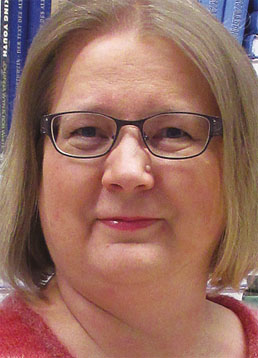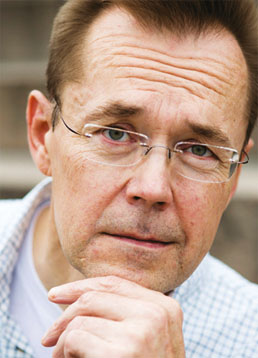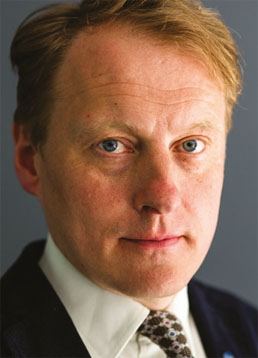
Staff reductions harsh and not well handled. Perhaps such deep cuts not necessary. Communications extremely poor. Leadership inadequate at all levels.
The key recurring themes of the Helsinki University Change Review Group report paint a grim picture of the changes made in the university during the last seven years.
The group, chaired by Professor Sue Scott from the University of York, had collected 436 comments though their website. Of these, only 5 percent were positive, and 95 percent negative.
“The staff of the university felt that the changes were done too fast,” Scott concluded at the presentation of the report, “Beyond the Changes: The effects of, and lessons from, the downsizing and restructuring process of 2015-2017”, held on the 25th of October.
In Scott’s view, this was not entirely surprising, as the changes made in the last seven years seemed to reflect similar changes in UK universities during the past 35 years.
“The pace has been fast. There has really been a lot going on, and not all of it was handled very well,” she pointed out.
The group admitted in the report that the national funding cuts did put the senior management of the university in a difficult position. But they also saw that the speed with which everything was handled was an overreaction.Changes that weren’t properly explained or communicated created an impression in the staff that Helsinki University had shifted from ‘Our University’ to ‘The University’. The term ‘The University’ was often used to refer to the senior management.
“The main problem has been the sense of a loss of control and a loss of ownership of the university,” commented one respondent.
There really has been no shortage of change during the past few years. The new university law put universities in a new, independent position, while the management’s plan to restructure the administration, along with the staff cuts and the remodeling of the degree structure in the so-called Big Wheel process, have been a lot to take in. On top of everything else, came a renewal of the university’s web page.
For example, the Big Wheel process seemed to confuse many at the university.
“Where did the idea for the Big Wheel come from? Did the management seek any external advise about the changes?”, asked one respondent.
One of the key criticisms coming out of the report was the centralisation of administration, especially the move of administration from the departments and disciplines to the faculty level.
“The admin teams at the faculty are located together but behind closed doors”, commented one respondent.
After the presentation, Scott was criticized for the fact that the report did not comment on the state of democracy in the university.
Scott replied that the group decided to avoid the term, since its definitions are vague. However, Scott commented that based on her experience as a young academic, the old university management seemed to be firmly in the hands of the older male academics.
To address the problems detailed in the report, the change review group had a lot of suggestions on how to improve things.
Some were quite general.
The University’s communication strategy needs urgent attention, including an evaluation of the communication processess across the university. The communication skills of the staff in leadership roles need due thought. The leadership would need to become less distant from the staff. Consideration should be given to ways of building trust both between academics and the new services departments.
On the other hand, the report also offered more concrete suggestions, like establishing developed administrative support teams in faculties and reconsidering the move away from the departments.
The entire Big Wheel process should also be evaluated externally.
Scott also hoped for a further expansion of the tenure track scheme as opposed to shorter contracts in the university, but realized this might be outside of the evaluation’s scope.
Speaking at the presentation, rector Jukka Kola promised that the University would take action on the report’s findings.
“Our key developments in 2018 will be communality and equality,” he said.
The next step is that the senior management will make proposals on how to proceed, based on the report’s suggestions. These proposals will be first presented to the University board and then to the collegium. They will also be open for everyone in the university to comment.
Kola also presented a formal apology to a member of the administrative staff, who felt that the process of reapplying for her old job had been humiliating and stressful. Kola stressed that ordering an independent, outside evaluation was a sign that the management did take the views of the staff seriously.
Given that, it seemed a bit surprising that the report was published only in the university’s internal web.
”The University publishes internal documents in the intranet – this applies to this report as well as all material about staff reductions, the reorganisation of administration and academic structures and the Big Wheel educational reform,” says director of administration Esa Hämäläinen.
“We have also published a press release on our external web site. The report is also available to the public by request.”
The report can also be found for example on the pages of the Yliopistokäänne movement.

Tiina Niklander
university instructor, Chief shop steward, University of Helsinki
“In her presentation, Sue
Scott pointed out very well
that information appearing
in the university’s intranet
does not constitute communication
with staff. She
also made it clear that a pure top-down management
does not suit the university. I think all the proposals
were good and I hope to see them implemented.”

Mikko Saikku
McDonnell Douglasm Professor of American Studies, University of Helsinki
“The disheartening findings
of the Scott report
closely mirror my own feelings
regarding the recent
changes at the University
of Helsinki. In order to commence a true healing
process among our teachers and researchers, the official
role of the University Collegium and the Faculty
Councils in decision-making should be increased.”

Seppo Sainio
University lecturer, Chief shop steward, University of Helsinki
“It’s great for the university
that it is open for an outside
evaluation. The major
question here is that since
there was a lot of criticism
of the way the changes were managed and executed,
why didn’t the management react to it? The report
can only heal the community if the most difficult
questions are addressed as well.”
Text Juha Merimaa
Painetussa lehdessä sivu 6